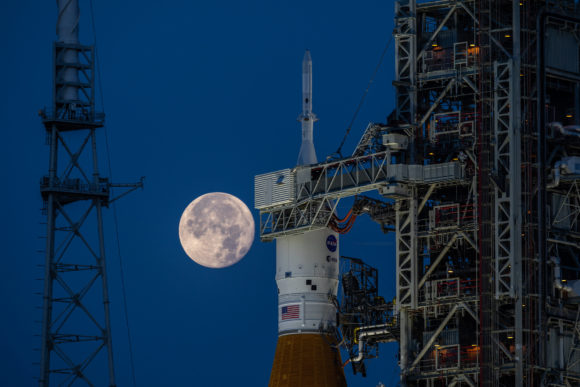You can see it coming, we've all been waiting for it and it's here: NASA today announced new delays to the Artemis program. The space agency is postponing the first manned mission, Artemis 2, from the end of 2024 to September 2025. In turn, it is postponing Artemis 3, the first manned landing on the moon – with a SpaceX lunar module – from 2025 to September 2026. Which will also include another lunar module. belonging to SpaceX, and is scheduled for September 2028. As we said, Artemis II was postponed to 2025 Popular voice, although the delay of almost ten months caught everyone and everyone by surprise. This means that about three years will pass between the launches of Artemis 1 and Artemis 2 (well, more, because a complex mission like Artemis 2 is unlikely to launch on time). Reason for the delay? Well, to the surprise of many, it has nothing to do with SLS, but with Orion, whose prime contractor is Lockheed Martin.

First, during the re-entry of the Artemis 1 mission, larger and more numerous pieces of heat shield were released than expected and NASA wants to conduct an in-depth analysis of the implications of these detachments and whether they pose any risk to the crew (this was a known issue)… Second, The capsule appears to have components of some defective circuits responsible for managing the valves of the ventilation and temperature control system that need to be replaced, but it is a relatively complex task (interestingly, these defects were first discovered in components of the Artemis III ship Orion). Finally, during tests of the capsule, it was found that some of the batteries could not withstand the vibrations. The tests simulated the level of vibrations during a launch abort using an escape tower (LAS), so the problem was not detected on the Artemis I mission, but it could pose a risk to a manned mission in the event of an emergency during liftoff (this is the first time NASA has mentioned this problem with the batteries ).



Regarding Artemis III, a delay from the end of 2025 to September 2026 was more expected. In fact, it's pretty clear that Artemis III will not be ready by that date, but it's also understood that NASA can't say much more without Artemis II flying and with the Starship system waiting to prove its performance. Let's remember that Artemis III will not be ready due to delays in the Axiom spacesuits for walking on the moon and in SpaceX's HLS lunar module. At the press conference, SpaceX engineer Jessica Jensen said she believes about ten Starship launches will be necessary to send HLS to the moon, although we will have to wait and see how the system matures next year. Test flights, especially after the first propellant transfer missions. In recent months, the debate over the number of HLS launches was once again put on the table after it was leaked that nearly two dozen Starship system missions would be needed to send it to the moon. Delaying Artemis III to 2026 means that SpaceX's HLS Option A unmanned test will take place in 2025, so SpaceX doesn't have as much time as one might think.



As for Artemis IV, it is still scheduled to launch in 2028. This mission will use SpaceX's second lunar module – HLS Option B – and will also dock with the Gateway station. However, at today's press conference, it was commented that the joint launch of PPE and HALO modules with Falcon Heavy, scheduled for October 2025, may be delayed (it does not make sense for the station to be in lunar orbit for three years). Unoccupied years until the docking of Artemis IV Orion). Speaking of the gate, although this is pre-press news, NASA confirmed a few days ago that the UAE will build the lock for the lunar station (initially Russia was going to build this lock). The Artemis VI mission's airlock is scheduled to fly sometime within the next decade.


In short, more delay than expected. And they won't be the last. Certainly, NASA's Artemis program is so complex and ambitious that it is surprising that it is moving forward with its current level of funding. Obviously it could be worse. In fact, hours before the press conference, the Internet was full of rumors suggesting that Artemis 2 would fly without a crew. Although this was ultimately not the case, it would not be surprising if NASA considered this option given the issues with the Orion capsule. Regarding competition from Asia, NASA Administrator Bill Nelson announced that China has no chance of sending a human to the moon in 2026. Natural, because let's not forget that the first flight of the Chinese lunar rocket, CZ-10, will be in 2026. 2027 The Chinese plan is quite clear and they have passively and actively reiterated that the first manned landing mission on the moon “will take place before the end of 2030.” What Nelson did not clarify is whether the United States has any chance of sending a human to the moon in 2026.



“Creator. Troublemaker. Hardcore alcohol lover. Web evangelist. Extreme pop culture practitioner. Devoted zombie scholar. Avid introvert.”
